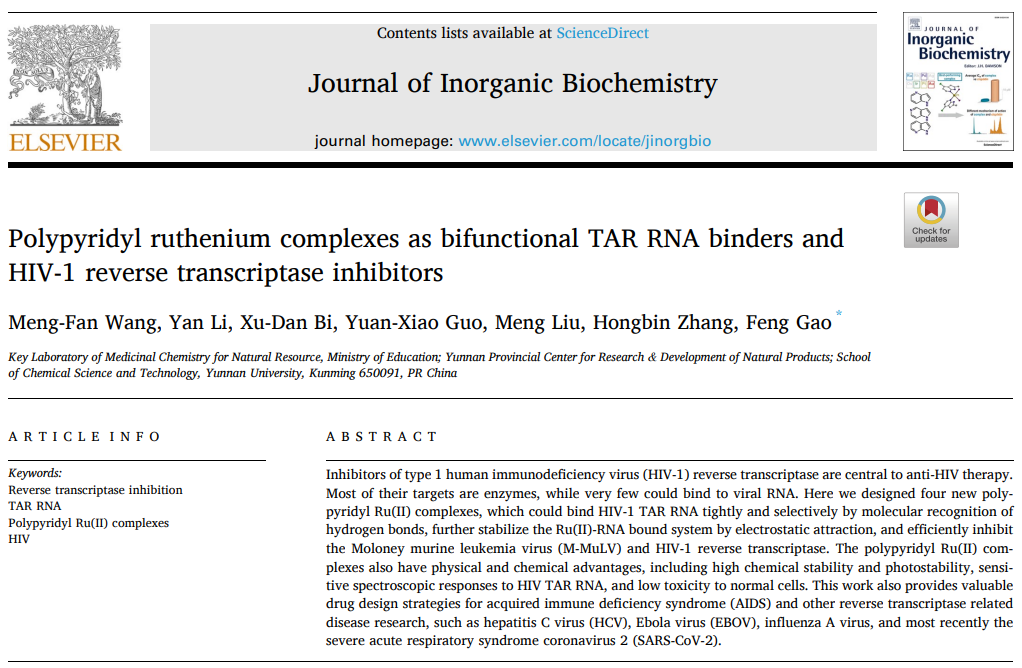Polypyridyl ruthenium complexes as bifunctional TAR RNA binders and HIV-1 reverse transcriptase inhibitors
By: Wang, Meng-Fan; Li, Yan; Bi, Xu-Dan; Guo, Yuan-Xiao; Liu, Meng; Zhang, Hongbin; Gao, Feng
Journal of inorganic biochemistry 234:111880
DOI10.1016/j.jinorgbio.2022.111880
Published:2022-Jun-02
Abstract
Inhibitors of type 1 human immunodeficiency virus (HIV-1) reverse transcriptase are central to anti-HIV therapy. Most of their targets are enzymes, while very few could bind to viral RNA. Here we designed four new polypyridyl Ru(II) complexes, which could bind HIV-1 TAR RNA tightly and selectively by molecular recognition of hydrogen bonds, further stabilize the Ru(II)-RNA bound system by electrostatic attraction, and efficiently inhibit the Moloney murine leukemia virus (M-MuLV) and HIV-1 reverse transcriptase. The polypyridyl Ru(II) complexes also have physical and chemical advantages, including high chemical stability and photostability, sensitive spectroscopic responses to HIV TAR RNA, and low toxicity to normal cells. This work also provides valuable drug design strategies for acquired immune deficiency syndrome (AIDS) and other reverse transcriptase related disease research, such as hepatitis C virus (HCV), Ebola virus (EBOV), influenza A virus, and most recently the severe acute respiratory syndrome coronavirus 2 (SARS-CoV-2).
